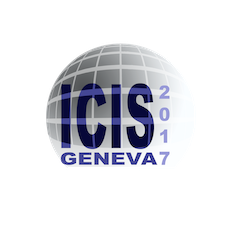Speaker
Description
DEMO will be the first fusion plant to produce electricity and has to demonstrate the capability of fusion technology to be used in a power plant environment. Reliability and high wall-plug efficiency are the key requirements for any system to be used on DEMO. In case of neutral beam injection (NBI) – one of the heating and current drive systems currently under discussion for DEMO – upgrades to several components are presently investigated within the EUROfusion activities, such as the ion source or the neutralizer. In order to maintain experimental flexibility, related fundamental investigations are performed at small-scale laboratory experiments under ion source conditions.
ITER’s NBI system is based on negative ions (NNBI) produced by surface conversion of hydrogen particles at a low work function converter surface. This surface is therefore covered with caesium. However, Cs is very reactive and thus the converter is easily affected by impurities. Furthermore, the interaction with the ion source hydrogen plasma leads to complex redistribution dynamics of the volatile Cs coating. Thus, in view of DEMO NNBI investigations are performed aiming either at reliable and reproducible Cs dynamics together with reduced Cs consumption, i.e. improved Cs management, or at identification of alternative materials for efficient negative ion production. Specific investigations are performed using several materials known from the literature, like boron-doped diamond, tantalum or LaB$_6$.
Secondly, the total RF power required for generating the hydrogen plasma for an ITER-like NNBI system is in the range of several hundred kilowatts. In order to relax the demands on the RF components in view of DEMO, several alternative RF coupling schemes are investigated in small-scale setups: magnetically enhanced ICP coupling, helicon wave heating as well as planar ICP coupling. The power transfer efficiency as well as the achievable plasma parameters are investigated depending of several external parameters like RF frequency or design of the plasma vessel.
Thirdly, the efficiency of the entire beam line of ITER NNBI is only in the range of about 25 %. The main limitation is the neutralization efficiency of the accelerated negative ion beam by a gas target, which is around 60 % in maximum at the required beam energy of 1 MeV. Here the concept of laser neutralization with theoretical efficiencies of up to 100 % is suggested as alternative. Together with less gas consumption and reduced pumping requirements the wall-plug efficiency could be increased to about 60 %. Such a drastically new concept requires feasibility studies, from which fundamental investigations on the coupling of a laser cavity with a negative ion beam are performed in a laboratory experiment.
